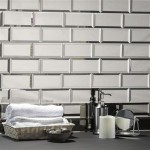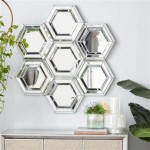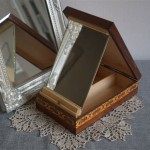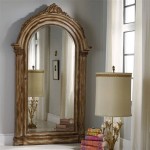Can You Glue Mosaic Tiles to a Mirror Frame? A Comprehensive Guide
Adding mosaic tiles to a mirror frame can transform a plain, functional object into a personalized work of art. The process is achievable for various skill levels, but success hinges on understanding the materials involved, selecting the appropriate adhesive, and employing correct application techniques. This article delves into the feasibility of gluing mosaic tiles to a mirror frame, providing detailed guidance on each crucial aspect.
Before embarking on this project, it's essential to understand that not all adhesives are created equal. Factors such as the type of mirror frame material, the size and material of the mosaic tiles, and the environmental conditions where the mirror will be displayed all play a significant role in adhesive selection. Moreover, proper preparation is key to ensuring a strong and lasting bond. Skipping crucial steps, such as cleaning the frame or using an incompatible adhesive, can result in tiles detaching over time, compromising the aesthetic appeal and structural integrity of the project.
Choosing the Right Adhesive: A Critical First Step
Selecting the appropriate adhesive is arguably the most critical aspect of attaching mosaic tiles to a mirror frame. The adhesive must be capable of bonding to both the frame material and the mosaic tiles, while also being resistant to moisture, temperature fluctuations, and potential degradation over time. Several types of adhesives are commonly used for this purpose, each with its own advantages and disadvantages.
Epoxy Resin: Often considered the gold standard for mosaic work, epoxy resin provides an incredibly strong and durable bond. It excels at adhering to a wide range of materials, including glass, ceramic, metal, and wood. Epoxy resins are also waterproof and resistant to chemicals, making them ideal for applications where the mirror may be exposed to moisture, such as in bathrooms or kitchens. However, epoxy resins typically require mixing two components, can have a strong odor, and may require a longer curing time. Some epoxy resins can also yellow over time if exposed to direct sunlight, which may affect the appearance of the grout and tiles.
Silicone Adhesive: Silicone adhesives are another popular choice, known for their flexibility and waterproof properties. They are particularly well-suited for applications where the frame material may expand or contract due to temperature changes. Silicone adhesives are readily available in various colors, including clear, which can be advantageous for hiding any visible adhesive. However, silicone adhesives may not provide the same level of strength as epoxy resins, and some types may not adhere well to certain types of mosaic tiles, such as those with porous surfaces. Furthermore, certain silicone adhesives can release acetic acid during curing, which can damage the silvering on the back of the mirror if not properly ventilated.
Construction Adhesive: Construction adhesives formulate to bond a wide variety of materials, and can be a suitable option for attaching mosaic tiles to a mirror frame, especially if the frame is made of wood or MDF. These adhesives typically provide a strong, permanent bond and are resistant to moisture and temperature changes. However, construction adhesives can be thick and difficult to apply neatly, and may require the use of a caulking gun. It is essential to select construction adhesive that is specifically designed for use with the materials involved and that is compatible with the mosaic tile material.
Thin-Set Mortar: While typically used for installing ceramic and porcelain tiles on floors and walls, thin-set mortar can also be used for attaching mosaic tiles to a mirror frame, particularly if the tiles are made of heavier materials, such as stone or glass. Thin-set mortar provides a strong, durable bond and is resistant to moisture and temperature changes. However, thin-set mortar requires mixing with water and can be messy to work with. It is also important to ensure that the thin-set mortar is fully cured before applying grout, which can take several days.
When selecting an adhesive, it's crucial to read the manufacturer's instructions carefully and to choose an adhesive that is specifically recommended for the materials involved. It's also advisable to test the adhesive on a small, inconspicuous area of the mirror frame and mosaic tiles to ensure compatibility and proper adhesion.
Preparing the Mirror Frame and Tiles for Adhesion
Proper preparation of both the mirror frame and the mosaic tiles is essential for achieving a strong and lasting bond. This step involves cleaning the surfaces, removing any loose or flaking material, and ensuring that the surfaces are properly prepared to receive the adhesive.
Cleaning the Mirror Frame: The mirror frame should be thoroughly cleaned to remove any dirt, dust, grease, or other contaminants that could interfere with adhesion. This can be accomplished using a mild detergent and water, followed by a thorough rinsing and drying. For frames made of wood or MDF, it's important to ensure that the surface is completely dry before applying adhesive. If the frame has a glossy or painted finish, it may be necessary to lightly sand the surface to provide a better surface for the adhesive to grip. Always wear appropriate safety equipment, such as a dust mask, when sanding.
Preparing the Mosaic Tiles: Mosaic tiles should also be cleaned to remove any dust or debris that could interfere with adhesion. This can be accomplished using a soft brush or cloth. If the tiles have a glossy or glazed surface, it may also be helpful to lightly scuff the back of the tiles with sandpaper to provide a better surface for the adhesive to grip. This is particularly important for tiles that are made of glass or ceramic, as these materials can be very smooth and difficult to bond to.
Consider Using a Primer: Depending on the material of the mirror frame, it may be advisable to apply a primer before applying the adhesive. Primers can help to improve adhesion, seal porous surfaces, and prevent the adhesive from being absorbed into the frame material. There are many different types of primers available, so it's important to choose a primer that is specifically designed for the materials involved. For example, if the frame is made of wood, a wood primer should be used. If the frame is made of metal, a metal primer should be used.
By thoroughly cleaning and preparing both the mirror frame and the mosaic tiles, you can significantly improve the chances of achieving a strong and lasting bond.
Applying the Adhesive and Setting the Tiles
Once the adhesive has been selected and the surfaces have been prepared, it's time to apply the adhesive and set the mosaic tiles. This step requires careful attention to detail and a steady hand to ensure that the tiles are properly aligned and securely attached to the frame.
Applying the Adhesive: The adhesive should be applied evenly to the back of each mosaic tile, using a small spatula or toothpick. Avoid applying too much adhesive, as this can squeeze out from under the tiles and create a messy appearance. It's also important to avoid applying too little adhesive, as this can result in a weak bond. The goal is to apply just enough adhesive to create a solid connection between the tile and the frame.
Setting the Tiles: Once the adhesive has been applied, carefully position the mosaic tile onto the mirror frame. Press the tile firmly into place, using gentle pressure to ensure that it is properly seated. If using a template or pattern, follow the template carefully to ensure that the tiles are aligned correctly. Use spacers to maintain consistent spacing between the tiles. These spacers can be purchased at most hardware stores or tile supply stores.
Allowing the Adhesive to Cure: Once all of the tiles have been set, allow the adhesive to cure completely according to the manufacturer's instructions. This can take anywhere from several hours to several days, depending on the type of adhesive used. Avoid moving or disturbing the mirror frame during the curing process, as this can weaken the bond between the tiles and the frame.
Grouting the Tiles: Once the adhesive has fully cured, grout can be applied to fill the spaces between the tiles. Grouting helps to protect the adhesive from moisture and dirt, and also enhances the aesthetic appeal of the mosaic. Select a grout color that complements the colors of the mosaic tiles and the mirror frame. Apply the grout according to the manufacturer's instructions, using a rubber grout float to push the grout into the spaces between the tiles. Wipe away any excess grout with a damp sponge. Allow the grout to dry completely before cleaning the mirror frame. Once grout is dry, consider sealing the grout to prevent staining by environmental factors. This extra step will help keep mosaic looking great.
By carefully applying the adhesive and setting the tiles, you can create a beautiful and unique mosaic mirror frame that will last for years to come.

How To Mosaic Tile A Mirror Caffeine And Cabernet

How To Mosaic Tile A Mirror Caffeine And Cabernet

Diy Mosaic Tile Bathroom Mirror Centsational Style

How To Decorate A Mirror With Tile Sand And Sisal

How To Mosaic Tile A Mirror Caffeine And Cabernet

No Grout Mosaic Tile Mirror The Diy Village

How To Mosaic Tile A Mirror Caffeine And Cabernet

How To Make A Custom Tiled Mirror The Stonybrook House

Diy Mirror Frame With Glass Mosaic Tile Armchair Builder Blog Build Renovate Repair Your Own Home Save Money As An Owner

How To Decorate A Mirror With Tile Sand And Sisal







